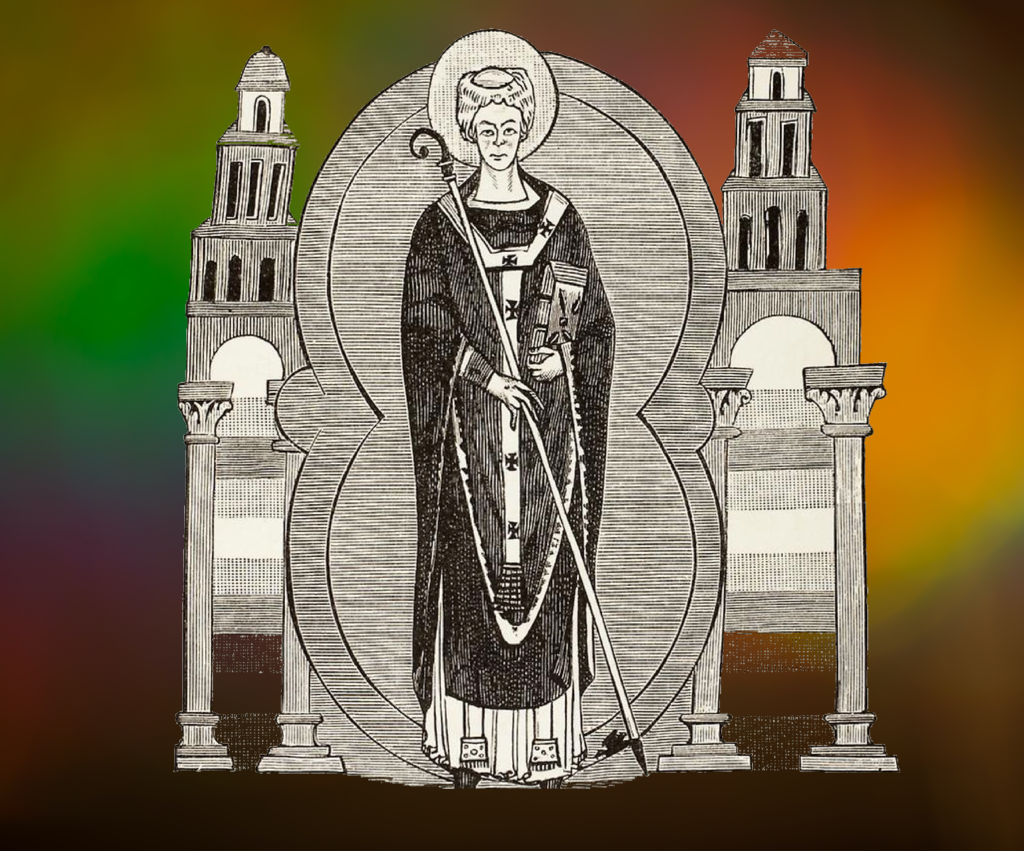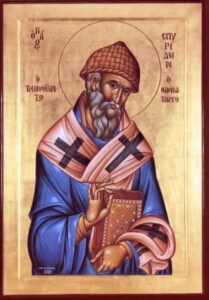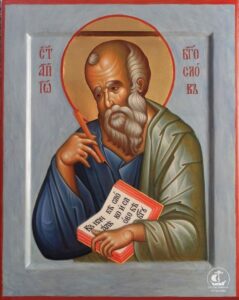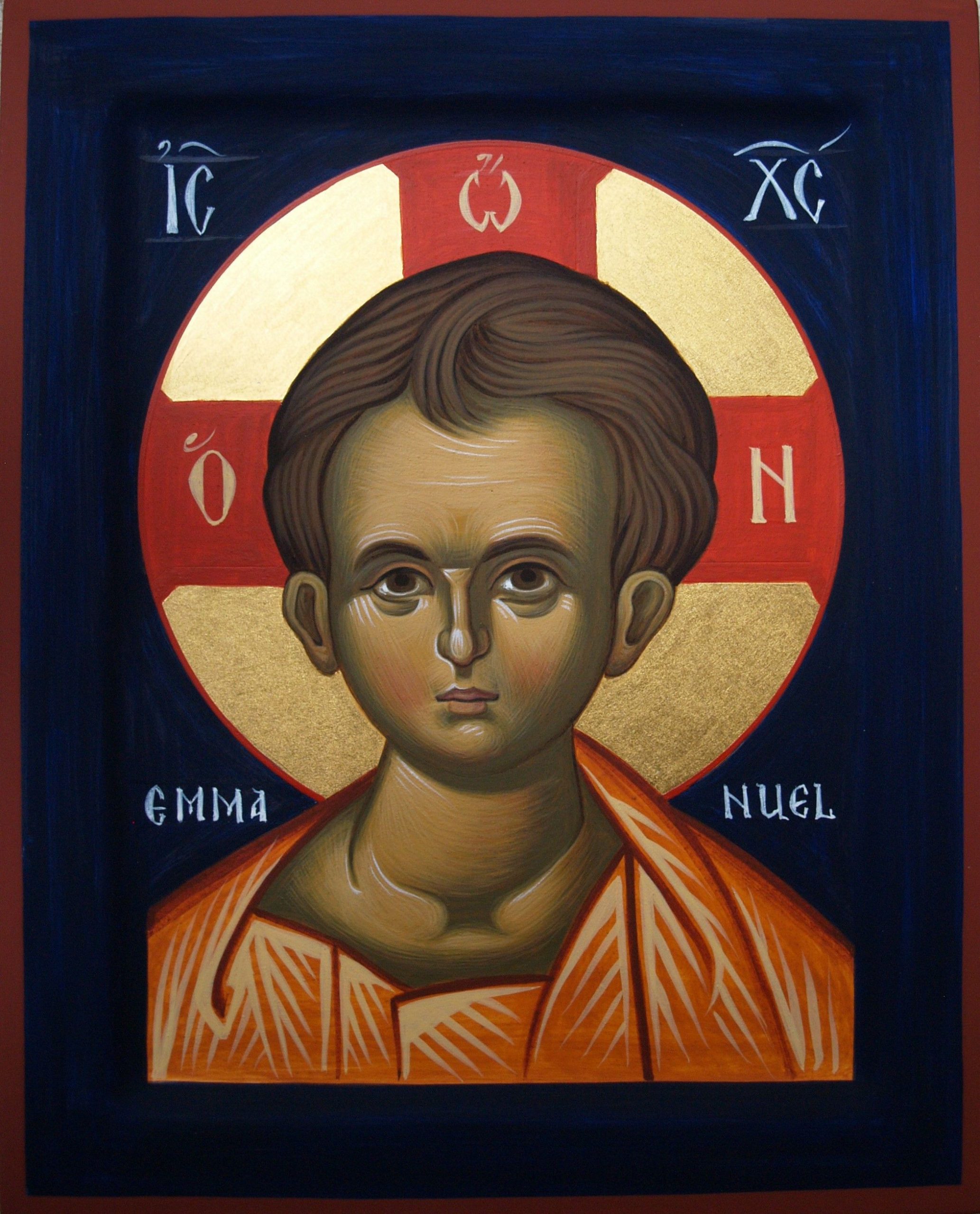Saint Wulfram of Fontenelle- March 20

Saint Wulfram of Fontenelle or Saint Wulfram of Sens ( c. 640–20 March 703[1]) was the Archbishop of Sens. His life was recorded eleven years after he died by the monk Jonas of Fontenelle. However, there seems to be little consensus about the precise dates of most events whether during his life or post mortem.
Saint Wulfram is depicted in art as baptising a young king or the son of King Radbod. Sometimes the young king is near him and sometimes Wulfram is shown arriving by ship with monks to baptise the king. There are two churches dedicated to him in England, at Grantham, Lincolnshire, and Ovingdean, Sussex,[2] and two in France, one at Abbeville, in the département of Somme, the other in Butot, in the département of the Seine Maritime. As a patron saint, he protects against the dangers of the sea.
Early life
Wulfram was born in the diocese of Meaux, at Mauraliacus, an insecurely identified place near Fontainebleau, probably Milly-la-Forêt, Essonne. He was the son of a certain Fulbert, a knight attached to the court of Dagobert I, king of the Franks. King Dagobert’s kingdom was divided on his death, and it was close to the court of his partial successor, Clovis II, king of Neustria and Burgundy that Wulfram is likely to have been born a little after Dagobert had died in 639.
Wulfram was educated at Clovis’ court and showed a gift for academic learning. He took holy orders and seems to have intended a quiet life but was called to the court of Theodoric III (Thierry III) of Neustria. This seems to have propelled him into greater prominence since, in 692, he was elected Archbishop of Sens. There are various versions of the date for this, the earliest being in 682. However, by 693 he was in the post as he attended an assembly of bishops at Valenciennes.
In 695, he resigned the archbishopric in favor of Saint Amatus, who, it seems, he thought would be better at that sort of work, and retired to the Benedictine abbey called “Fontenelle”. There are several places called Fontenelle, but this was probably at St-Wandrille, near Caudebec-en-Caux on the lower Seine, in the Diocese of Rouen. However, Johannes Madey[3] places it at Fontenelle in the extreme north of the département of Aisne.
The mission in Friesland
It is said that when Saint Boniface withdrew from his missionary work in Friesland, in order to visit Rome for the second time, St. Wulfram stood in for him in Friesland. However, Boniface was a younger contemporary, his first and abortive mission in Frisia began in 716 or so, probably after Wulfram had died.
Whatever the order of these events, in Frisia, St. Wulfram converted the son of King Radbod and was allowed to preach. The custom was that people, including children, were sacrificed to the local gods having been selected by a form of lottery. Wulfram, having remonstrated with Radbod on the subject, was told that the king was unable to change the custom but Wulfram was invited to save them if he could. The saint then waded into the sea to save two children who had been tied to posts and left to drown as the tide rose. According to the story, the turning point came with the rescue of a man, Ovon, who had been chosen by lot to be sacrificed by hanging. Wulfram begged King Radbod to stop the killing, but the people were outraged at the sacrilege proposed. In the end, they agreed that Wulfram’s God could have a chance to save Ovon’s life, and if he did, Wulfram and the God could have him. Ovon was hanged, and left for a couple of hours, while Wulfram prayed. When the Frisians decided to leave Ovon for dead, the rope broke, Ovon fell and was still alive. Ovon became Wulfram’s slave, his follower, a monk, and then a priest at Fontenelle Abbey. The faith of the missionaries (and their power to work miracles) frightened and awed the people, who were baptized and turned away from paganism.
Even Radbod seemed ready for conversion, but just before his baptism, he asked where his ancestors were. Wulfram told him that idolaters went to Hell. Rather than be apart from his ancestors, he chose to stay as he was.
Wulfram’s death and after
He retired to Fontenelle, where he died in 703. The saint’s year of death is sometimes given as 720, but his interred body is said to have been moved in 704. Regardless of the exact year, St. Wulfram’s feast day is kept on 20 March. He was buried in St. Paul’s chapel in the abbey, but in 704, he was re-buried in the main church. The body was again moved in 1058, this time to the collegiate church of Our Lady in Abbeville, which was then re-dedicated in Wulfram’s name. The translation of his body to Abbeville is commemorated on 15 October.





